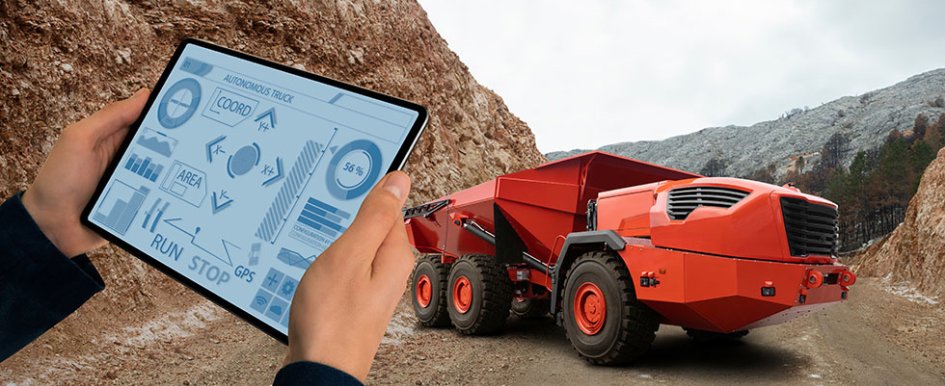
In today’s construction industry, technology is the driving force behind transformative change, breathing new life into a sector facing multiple challenges. This digital transformation is not merely a shift but a dynamic renaissance, igniting the next phase in the industry's evolution, promising innovation and unlocking a realm of future possibilities.
Hexagon's Autonomous Construction Tech Outlook demonstrates the transformative power of technology. Commissioned by Hexagon, FMI Corporation surveyed more than 1,000 technology decision-makers across Australia, the United Kingdom and North America. Based on the responses, the study shows that technology is not merely a tool, but a solution to the industry's most pressing pain points.
A Landscape of Challenges & Opportunities
Technology leaders pinpointed procurement and supply chain issues, communication and collaboration, and inefficiencies and waste as the most challenging areas of their operations. Survey respondents also shared their short-term business priorities (12-18 months) which reflect the necessity to tackle these obstacles. Their top priority is improving the management of materials and supply chains, followed by increasing efficiency and productivity and finding solutions to labor issues.
As construction leaders look to the future, sustainability is a crucial issue. Reducing waste saves money for construction project managers while also reducing the strain on resources. The ability to meet new green building regulations is already integral to winning new business projects. The adoption of autonomous solutions is bridging the gap between profitability and sustainable practices. Through enhanced accuracy, optimized resource usage and reduced waste, these solutions harmonize profitability and environmental stewardship.
Autonomous Technology Within the Construction Industry
Different technologies provide solutions for a variety of challenges, including procurement and supply chain intricacies, communication bottlenecks and inefficiencies.
Commercial construction has widely adopted autonomous technologies. In fact, our research found that 84% of firms are using autonomy in some part of their operations. These companies reported benefits across many challenges and priorities, including improved sustainability, less waste, better supply-chain mapping, improved safety compliance and faster decision making. Previously, the use of technology had improved workflows but resulted in a data deluge that many companies were unable to handle. Autonomous tech closes this leverage gap between the data created during a project’s life cycle and the data used to produce actionable insights.
In the construction industry, autonomous technology takes a number of forms: self-driving construction vehicles; robotics — for example, used as carriers for scanners or cameras for surveillance and monitoring; and software and tools. The study found the most popular application currently is project management.
Autonomous technology can be adopted to a varying degree, requiring some or no human interaction. Thirty percent of the respondents had introduced fully autonomous solutions that require no human interaction. Such solutions keep project stakeholders well-informed and free up skilled workers’ time for more complex tasks.
We have seen a number of examples of this happening, such as with AutoZone, a retailer and distributor of automotive replacement parts and accessories with more than 7,000 stores across the U.S., South America, Puerto Rico and the Virgin Islands. The company continues to build more stores and therefore needs to manage construction projects effectively. AutoZone decided to implement construction camera services to provide real-time project visibility. The cameras enabled the store development team to oversee jobsites across the hemisphere, giving a side-by-side comparison of 7 to 14 days of activity. The projects can then be analyzed in more detail. Artificial intelligence helps recognize patterns and issues throughout the project’s life cycle. The AutoZone team was able to optimize scheduling with the contractors. Using insights from the activity analysis feature helped the team address issues early and minimize change orders, ensuring smooth project execution.
Strategic Investments for a Transformed Tomorrow
According to the survey, a little over half the firms surveyed plan on investing an average of $7.1 million in autonomy within the next three years — with 30% planning to invest over $10 million. This speaks volumes about the industry's belief in the technology's potential. To ensure the optimal use of these investments, firms must adopt a strategic approach. Recognizing that technology is not a panacea but a tailored solution, construction leaders need to align their investments with their most pressing challenges and objectives.
Crucially, technology adoption is not an imposition on the workforce; it is an enabler. The introduction of autonomous technology can enhance the employee experience by automating repetitive tasks, empowering the workforce to focus on value-added contributions. This approach fosters acceptance, minimizes resistance and maximizes the benefits of technology integration.
Challenges in the Adoption of Autonomous Technology
It must be acknowledged that adoption of autonomous technology in the construction industry, while promising a multitude of benefits, is not without its hurdles. Construction companies face several challenges such as the upfront investment in technology, training the existing workforce and increased cybersecurity vulnerabilities.
Conquering these challenges necessitates a strategic approach along with workforce development, and the adaptability to excel in a digitally transformed construction landscape. Those companies that navigate these hurdles now position themselves for long-term success in the future.
A New Era of Innovation & Transformation
Addressing its immediate challenges, generating new opportunities for success and reshaping its operations — the construction industry is being reimagined. Autonomous technologies propel the industry into the future and help shed its reputation as a “digital laggard.”
